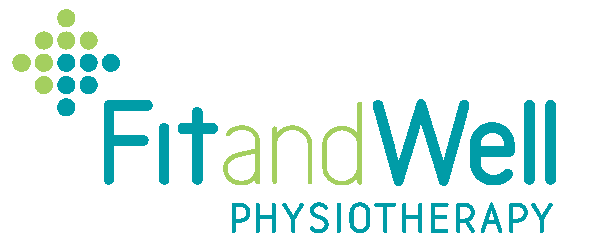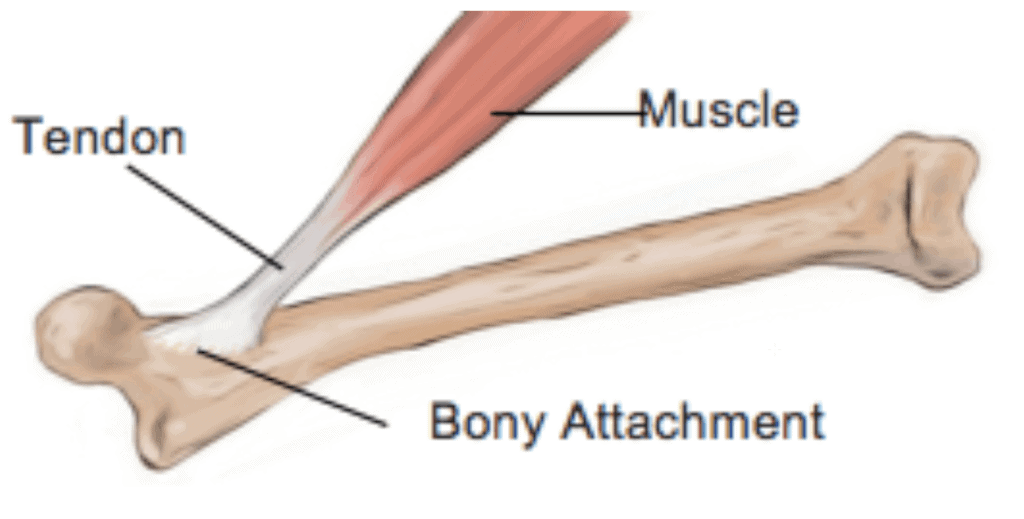One of the major causes of pain is a problem with tendons or tendonitis. People often get pain when they tear a tendon, or they might have a bruised tendon or an inflamed tendon.
So what is a tendon? Well a tendon is … let me create a picture. Muscles are like elastic springs and tendons are like the hooks that attach the springs to the hard surface, which in the case of the body is the bone. They transfer the forces from the muscle as it contracts to the bone to make it move. And they’re whiter than muscle because they have a lot more collagen. They’re also a little denser and not as elastic because of their composition.
About injuries to tendons
A tendon can withstand a fair bit of tension, but excessive tension will cause a tear. You can also get inflammation if you’ve overused the tendon too much or it’s subject to repetitive force. Inflammation may catch on the tendon if other structures around it are also inflamed. A change in the tendon structure is called a tendinopathy, andwill only be detected on a histology (if a biopsy is taken).
How we can help with tendon injuries and tendonitis
You may have a tendonitis, which is more common in younger people, or you might have tendinopathy. If you have one of these injuries, we can help you gradually increase the loading on it and work out how much support your tendon will need to heal properly. We’d gauge how severe your injury is and what stage it’s at in the healing process. And we could give you supports such as orthotics (or refer you to a podiatrist or an orthotist to give you orthotics).
Orthotics will change the position of your foot in your shoe so that you have less load on your leg. Tape may assist, or we might recommend some kind of cushioning. In the case of your foot or leg, we might suggest you put gel cushions Or under your foot? . With problems related to things like repetitive typing, we might suggest gel pads for when you’re using a keyboard.
We help with healing tendons specifically by the kinds of exercises we give you. And we may recommend that you have eccentric loading, which is controlling the force of your tendon working against gravity and restricting rather than causing movement. We’d also work out how much speed you have to exert to go back to your usual activities. That might mean that you’ll have a gradual increase in explosive motion if that’s a kind of exercise and activity that you do. It’s our job as physios to balance all these things out.
What we do to help muscles heal
To alleviate body aches and sore muscles, we might advise you to rest the area, apply ice to it, compress the area with a bandage and elevate (RICE). Ideally you should elevate the injured part above the level of your heart. An acute or sudden injury benefits from limiting the degree of inflammation that’s generated for healing. By doing this, you speed up the entire healing process (although initially it stops too much swelling occurring). It’s a bit like applying glue to a piece of damaged wood – you want to put enough glue on to stick the broken bits together, but not so much that you end up with a gluey mess that stops the wood functioning properly.
We may offer you a brace or supports, or gait aids to help take the load off that muscle. Taping can be really good for this because it enables some movement while providing a level of support. But sometimes this isn’t enough. As physios, we know how much support that muscle will need because we can diagnose how severely your muscle is injured.
You might also get a bruise to a muscle, otherwise known as a contusion, and we would manage this initially with RICE as well. We may apply ultrasound therapy or some other kind of electrotherapy modalities, using machines to provide particular energy to the area to enable your body to speed up the healing.
It’s important to emphasise that you need the right amount of support but also the right amount of load to the healing tissues. As physios, we understand the healing process and time it takes for tissues to heal during the various stages of healing. We’ll take into account your specific injury and situation, then work out how much load to put on a muscle at any particular stage.We might help the healing by using hands-on treatments, such as massage, but there are certain times or phases of the healing process where that wouldn’t be suitable. Or we might need to apply some stretch to your muscles.
Muscle fibres are a bit like steel wool fibres. If it’s all matted it’s pretty easy to separate the fibres in the same way that it’s really easy to re-injure a muscle. But if you apply the right amount of stress as the muscle tissue is healing, the body will give ‘advice’ to the cells as they’re healing, so that repairing tissueis‘lined up’ along the lines of stress to produce a stronger structure within the muscle. (It’s actually hard to pull steel wool apart if you pull it in the right direction.)So by giving it the right loading at the right time, you prevent future injuries occurring because the body’s a little stronger from the stress that you’ve applied to it.
You also have to regain your strength in the injured muscle. That means the appropriate amount of loading in the right direction with the correct amount of timing, force and frequency, depending on what activity you want to get back to. If you wanted to return to, for instance, long-distance running, we wouldn’t get you to do lots of short sprints. We’d be thinking about your goals and how we can help you achieve those goals by getting you to load those tissues and rehabilitate at the rate that your body needs.
It might mean looking at your whole body, taking into consideration what caused the problem in the first place. We’d also consider the various stages of healing and the forces taken by different parts of the body when you make the movements you undertake most frequently and the forces you need to generate for your daily activities. In a lot of cases, particularly with muscles, people tend to adapt. Sometimes the problem is a postural problem where you’ve adapted to being weak in one area by getting really strong in another. But that other area might not be designed to take the degree of load that you put on it.
We would assess why this has happened and what problems may be developing as a compensation. Then we’d work other muscles so that we don’t overload the area that’s already prone to injury. That way, we’ll also prevent you from having another injury.
The other thing we have to consider in terms of muscle is restoring the timing. For example, lower back injuries are often out of timing. If we can restore the timing of contraction of the right muscles, you’ll have approximately 33% lower risk of re-injuring your back. Getting that right requires an understanding of coordination and when muscles should be working in-phase or out-of-phase with the other muscles, because a group of muscles doesn’t work in isolation. Every joint is surrounded by different muscles and having them work in the right pattern makes a difference to your overall performance. We’ll look at that and work out how best to get you to exercise, move, strengthen or regain movement so that you get the best function available for you.


